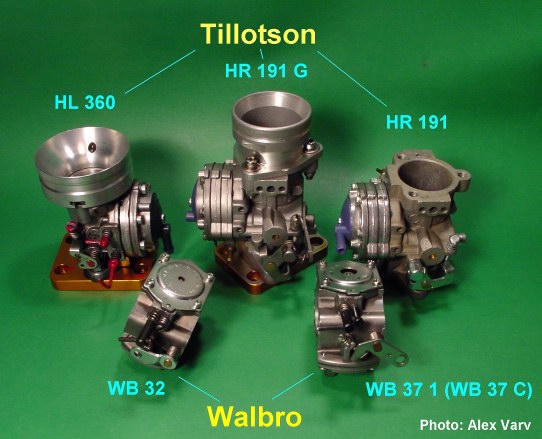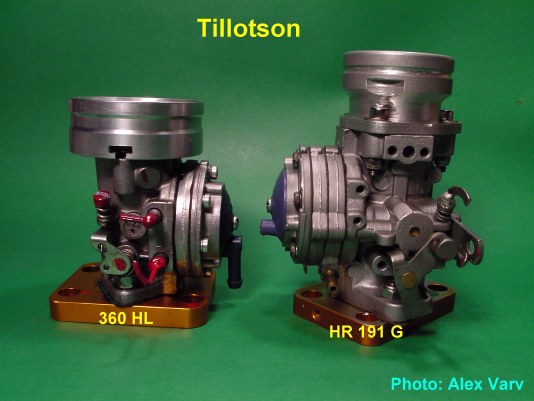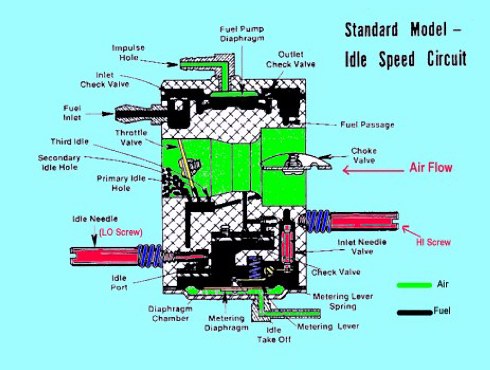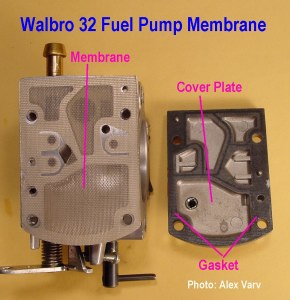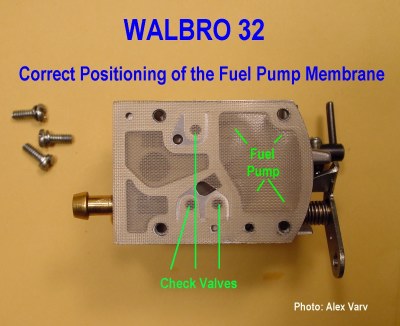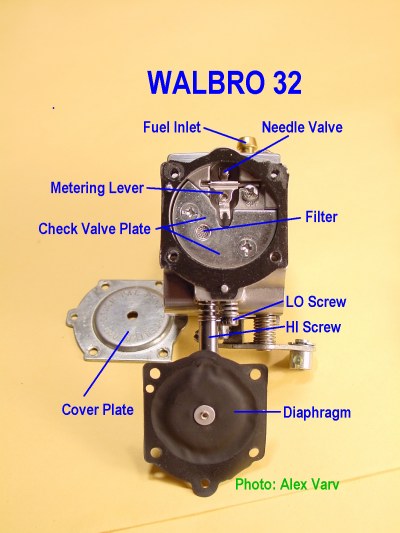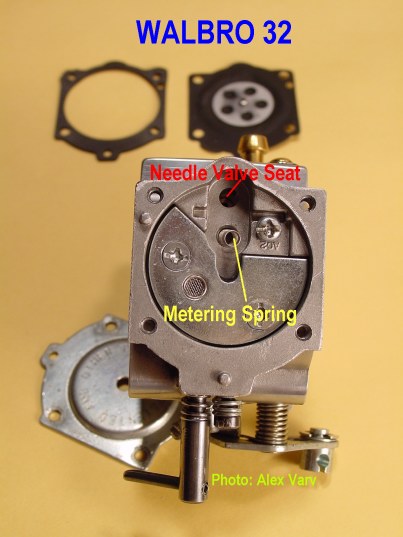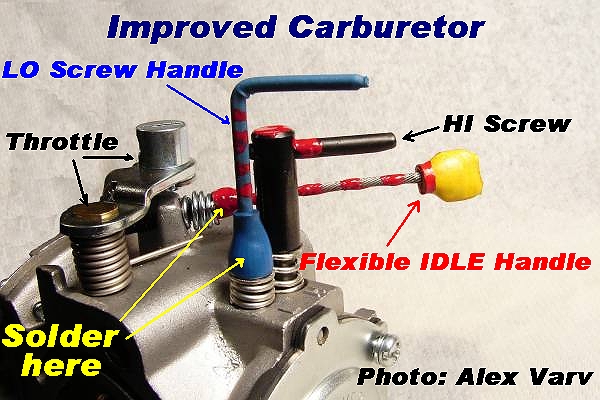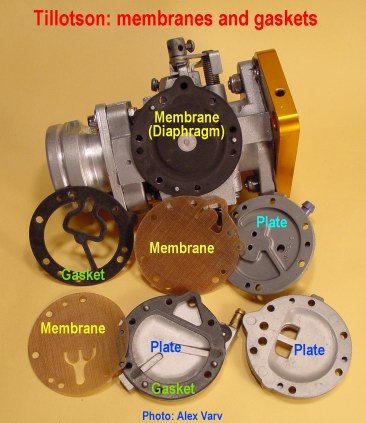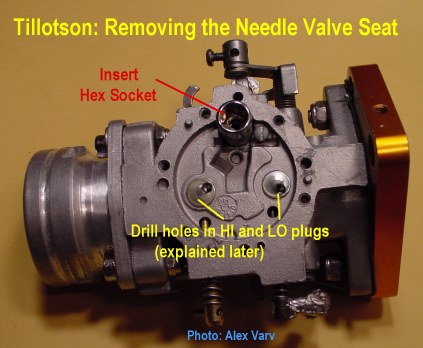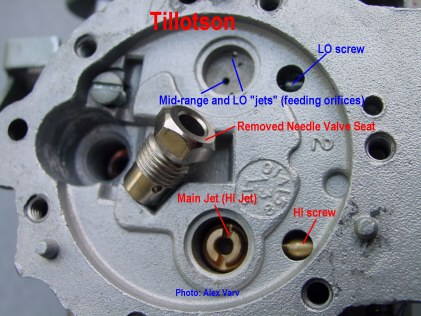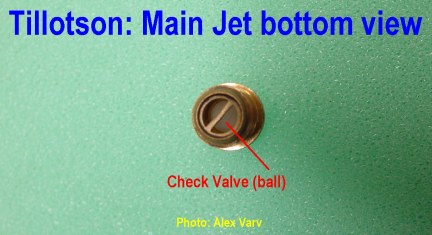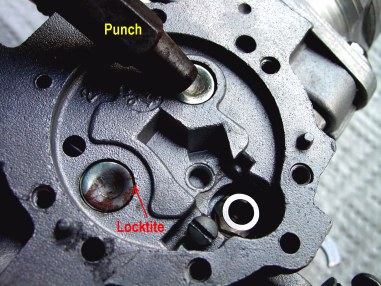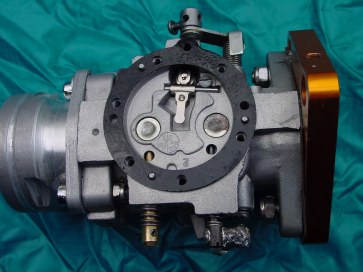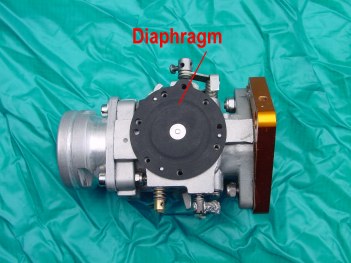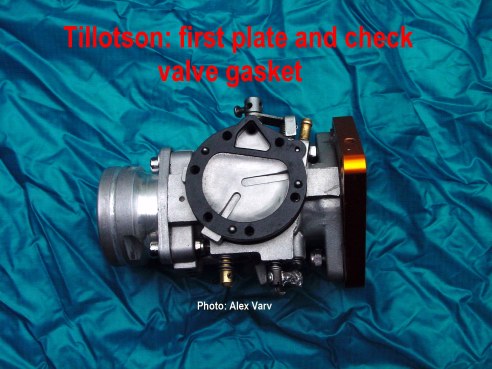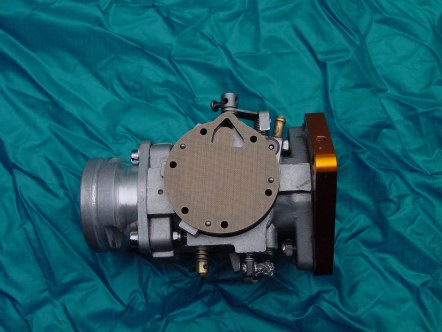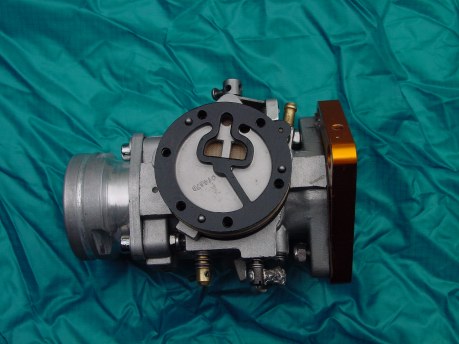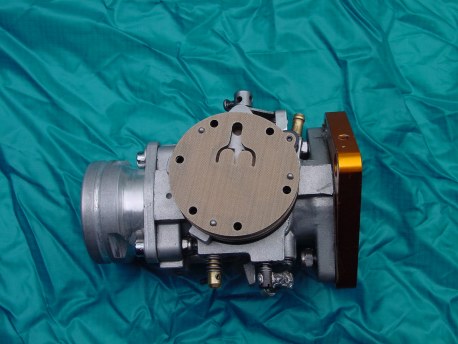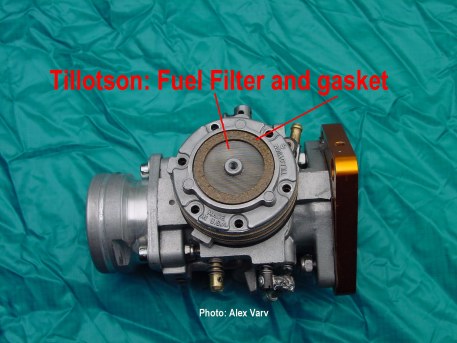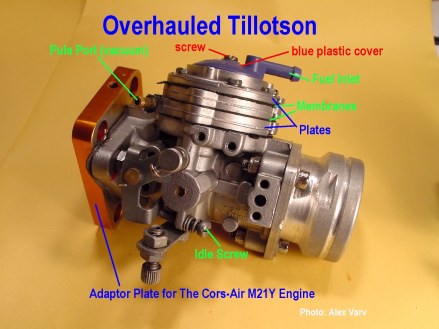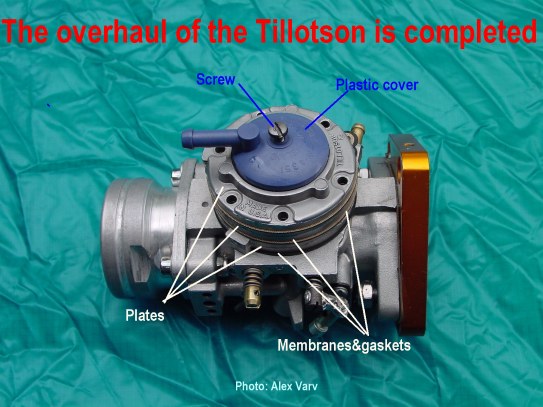This page contains construction details of the Diaphragm Carburetors used in paramotors.
We will show both the popular Walbro 32, Walbro 37 c, the Tillotson HL 360 and HR 191 G models.
I wrote this article many years ago when the Walbro WB 37C carburetor was NOT used on PPG engines.
Now the WB 37 C is used on most engines but the difference between the WB 32 , WB3A and WB37C
is so little that basically, following the instructions for the WB32 overhaul will allow anyone to overhaul a WB37C!
The first two illustrations below, show a cross section of the Walbro 32.
The black color represents the fuel as it passes through the carburetor. The green color represents the air. We will not present a cross section of the Tillotson because it is very complicated to draw and would take up too much space.
Here is how the carburetor works:
The membrane of the Fuel Pump is activated by the vacuum pulses from the crankcase. The fuel is pumped and enters through the Fuel Inlet. As it passes the Check Valve and a filter, the fuel is directed to the Needle Valve which is opened by the atmospheric pressure acting on the Metering Diaphragm. The pop-off pressure is set by the spring (Metering Lever Spring)
At Low RPM the fuel mainly enters the Venturi through three Idle Holes which are situated one after the other. This ensures a smoother acceleration and prevents the mixture of running too lean when the Throttle Valve is being opened.
The amount of fuel is regulated by two screws: HI and LO (for high and low
RPM)
The next illustration represents the High Speed Circuit. One thing is important here. Contrary to the belief that the LO circuit is active only at low RPM and the Hi at high RPM, BOTH circuits are active at high RPM as seen below. On the same token, even at low RPM, opening the HI screw will affect the mixture somewhat (it is partially active)
After getting familiar with the principles of the diaphragm carburetors, let us have a look at some real pictures. I hope that the explanations on each of them will help pilots to overhaul their carburetors. Please remember that once a year a membrane carburetor should be overhauled in order to ensure the best possible performance! Many pilots do not do this. Some get away with it, some
don't......
Important NOTE:
I wrote this article many years ago when the Walbro WB 37C carburetor was NOT used on PPG engines.
Now the WB 37 C is used on most engines but the difference between the WB 32 , WB3A and WB37C
is so little that basically, following the instructions for the WB32 overhaul will allow anyone to overhaul a WB37C!
When overhauling a WB37C do NOT install the check valve under the half moon plate of the metering chamber!
(see second picture below)
Important NOTE: When overhauling the Walbro WB 37C carburetor do NOT use the check valve shown in the picture above. Use only
the check valve gasket under the "half-moon" plate!!!!!
Important Note: shortening (clipping) the metering spring, will decrease the pop-off pressure; extending it, will increase the pop-off pressure. This subject will be discussed further.
Now we shall point out the difference between the Walbro 32 carburetor and the Tillotson. The Walbro is a carburetor made to perform well at idle and full RPM. It does not perform well in mid range. Using a Walbro I fly with my in-flight remote carburetor adjustment system with excellent results. The description of this device can be found in the Technical Info at:
Recent update for the Walbro carburetor(Dec. 2005)
After many requests from different pilots I am publishing a picture (below) showing the improved handles of the carburetor. This will allow us to tune the carburetor while the engine is running.
All I did was to solder a steel cable with a small handle on the Idle Screw and an "L" shaped nail on the LO screw.
Tillotson Carburetors
The Tillotson is a better carburetor (when it works properly). It is bigger, a little heavier and more complicated but it will give good performance in the mid- range RPM as well. The HL 360 model is less complicated than the HR 191 G.
Because the Tillotson is more complicated to overhaul, we will illustrate this, step by step:
After removing the carburetor from the engine, both ends of the venturi should be closed with paper or clean cloth. The carburetor should be externally cleaned with clean gasoline. (some membranes may be damaged in contact with certain types of carburetor cleaners) Let us have a look at all the membranes of the Tillotson:
After removing all the bolts, the plates with membranes will come off. If the diaphragm has not come off, it should be gently peeled away. Now we have access to the metering system:
Loosen the bolt holding the metering lever, remove the lever, pin, spring and needle valve. Next we remove the needle valve seat:
Now, we shall remove the "plugs" covering the HI and Lo jets. As seen above, each plate (plug) had a small hole drilled into it for easier removal.
Removing the "plugs" we can access the main jet
Next, we unscrew the main jet. On the bottom, it has a check valve. It is very important that this valve opens and closes freely. This is how it looks:
Next, we remove the HI and Lo needles with their springs, washers and rubber seals. Using a good quality carburetor cleaner we should blow into all holes and passages. After drying ALL the cleaner, we can proceed with installing the new parts. Reinstall the HI and LO screws.Reinstall Main Jet and Needle Valve Seat. Using the new round plugs supplied with the repair kit and a small amount of lock-tite around the rim of the holes, we install the HI and Lo "plugs" and lock them in place, using a blunt, rounded punch:
Next, install the Needle Valve, Spring, Metering Lever, tighten the bolt holding the lever in place, install new diaphragm gasket the plates and membranes in reverse order they were taken apart:
Last step: install the blue plastic filter cover. Important note: the screw MUST not be overtorqued! It will damage the plastic.
For more carburetor info, please check the Inventions Page the "Carburetor Related"
